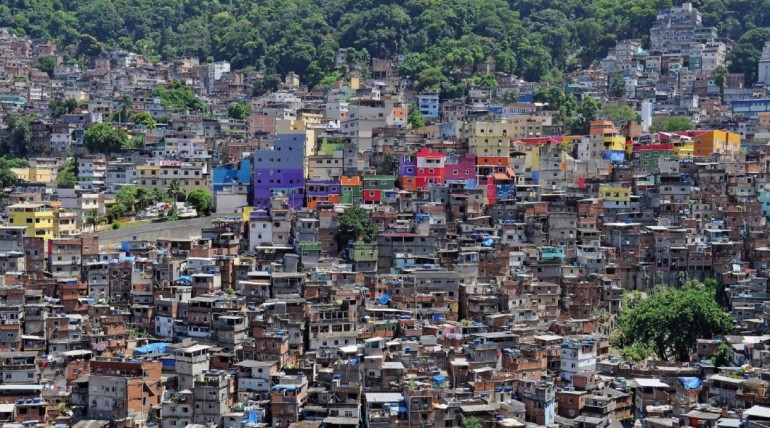Sponsored Listings:
Rio de Janeiro shows its slums to the world, and, of course, the carelessness of the government when it comes to dealing with social inequality. Slum tourism is growing in popularity.
Deprived of a promising future, the inhabitants of the slums survive entrenched, entangled between the absence of public power and criminality, amid a context of poverty that is depicted by them in vivid colors, the infamous social inequality, a tragic work that attracts the attention of international tourists, eager to know what is foreign to them. The bizarre tourist safari inside the slums of Rio de Janeiro, backed up by the government, has been a reality for several years already, and is one of the attractions that the foreign visitor is able to find when she arrives at the Wonderful City.
Rio’s slums, or favelas, the birthplace of the city’s Carnival parade, samba music and street art, have long been known for drugs and crime. The rising violence is becoming more and more a concern of the tour operators taking tourists to the slums. There are, on average, 15 shootings a day between the police and heavily armed gangs. Hundreds of people, many of whom are residents of the favelas, have been killed or wounded in the crossfire. Last October, a female tourist from Spain was killed in such shooting. After that, tourism and security authorities have created a committee to regulate tourism in slums.
As soon as one steps out of the upper-end hotels scattered throughout the coastline, pickup trucks with a camo painting rev up their engines, taking the “gringos” to make them closely acquainted with the human servitude trait of the slums, a product of the carelessness and the abandonment of successive governments over the years. Since 2006, when the Rocinha slum acquired the status of an official tourism destination of Rio de Janeiro, due to the bill of the city councilor Lilian Sá, sanctioned by the mayor César Maia, this entertaining business with dubious ethics and morality is part of the tour of the State Secretariat of Tourism.
A study by the Brazilian National Confederation of Commerce and Tourism claimed that the increase in crime was responsible for a loss of $200 million to the city’s tourism between January and August of this year. In 2015, Rio made $5 billion from tourism.
In the beginning, the idea to flaunt or sell poverty was based on the notion that it would benefit the residents, as discussed in the 1st Congress of Community-Based Tourism, held in Rocinha, but the outcome was different. Since slum tourism was established, few people have actually benefited from this business of misery exhibitionism, also called poorism or voyeurism. According to the architect Izabel Cristina Reis Mendes, from the Faculty of Architecture and Urbanism of USP, the money of the tourism industry which should be allocated to the local population is not injected into the slums, and so the inhabitants, key players of this unique industry, unlike the original concept of generating advantages and well-being, do not take advantage at all.
Evan Selinger, from the Rochester Institute of Technology, and Kevin Outterson, from Boston University School of Law, in the essay The Ethics of Poverty Tourism, dwell on the ethical and moral issue of the contemplation of poverty which attracts so much those who do not live it and do not recognize, despite their positive inclinations towards this industry, that the empirical works on the subject claim that slum tourism is ethically condemnable, an opinion shared by major media outlets, like the New York Times, Smithsonian Magazine, Newsweek, the Wall Street Journal, The Huffington Post, among others, which regard such tours as morally questionable.
Despite the ethical-moral principle which condemns the exhibitionism and the sale of poverty, this activity will probably continue to be part of Rio de Janeiro, since, according to the current Secretary of Tourism, Nilo Sérgio Félix, slum tourism should not be banned, quite the opposite, it must go on. Therefore Rio de Janeiro will keep its arms wide open proudly showing to the world its slums and, of course, the recklessness and carelessness of the current government and its predecessors, in dealing with social inequality.
Source: tourism-review.com










